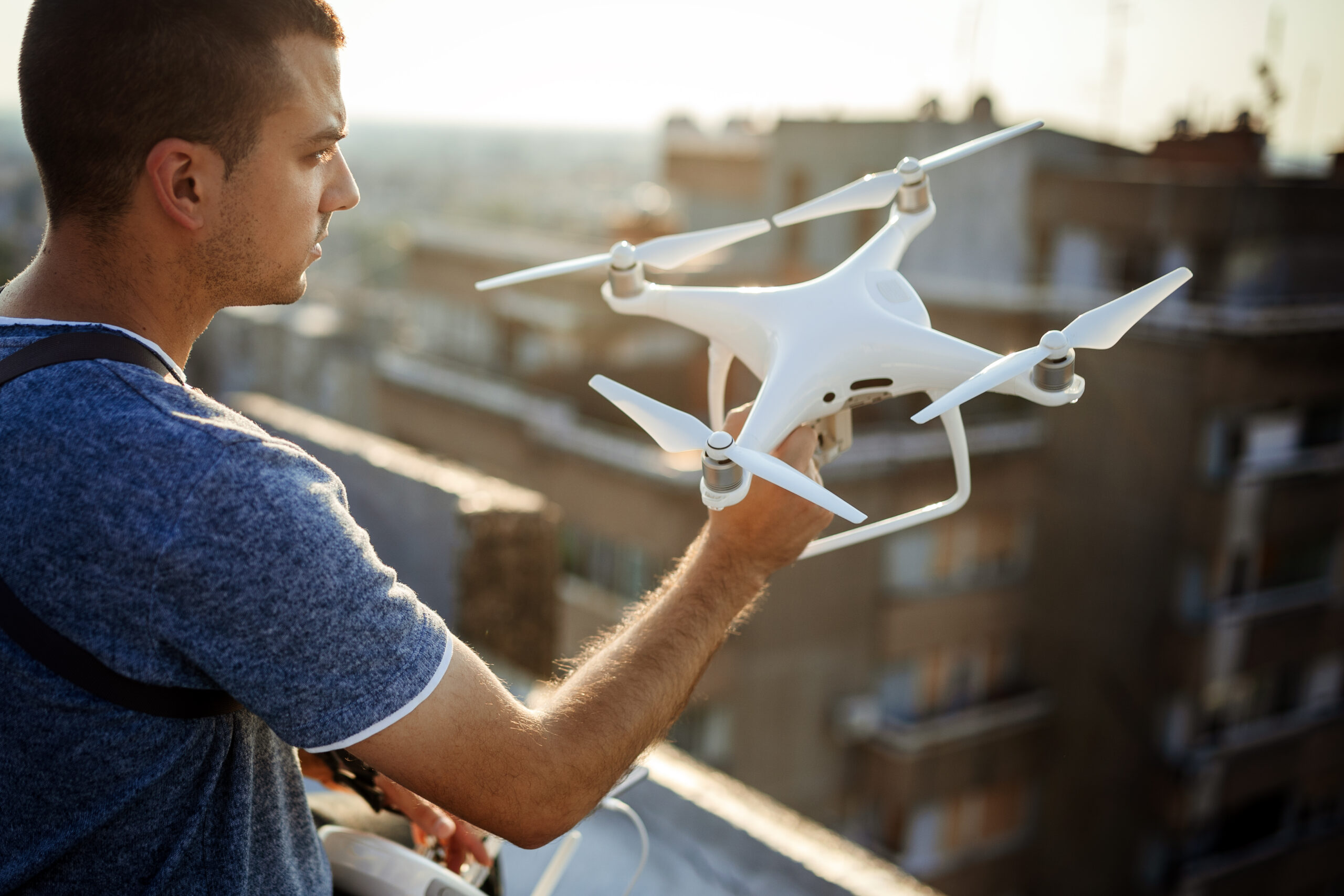
Introduction
The rapid progress in drone technology on a global scale has ushered in a new era with profound implications for multiple sectors, encompassing agriculture, logistics, and surveillance. These advancements extend far beyond industry-specific changes, permeating even into the intricate world of foreign exchange (forex) markets. This article seeks to delve deeper into the economic ramifications of the progression of drone technology and its intricate connection to forex markets, illuminating the previously unexplored intersections between these seemingly distinct domains.
The Transcendent Impact of Drone Advancements
Drone technology, characterized by unmanned aerial vehicles equipped with cutting-edge sensors and cameras, has catalyzed a sweeping transformation across various sectors. One of the foremost areas that has experienced a paradigm shift is agriculture. Drones, armed with specialized sensors and imaging capabilities, have empowered farmers to transcend traditional farming practices. They can now meticulously monitor the health of crops, assess soil conditions with unprecedented precision, and implement precision farming techniques. This heightened efficiency and data-driven decision-making have led to increased agricultural productivity and cost savings.
Similarly, the logistics and supply chain management sector has undergone a revolution driven by drones. These aerial vehicles are being increasingly harnessed for last-mile deliveries, inventory tracking, and optimizing warehouse management. Drones’ agility, swiftness, and cost-effectiveness have streamlined logistics operations, significantly reducing operational expenses for businesses. This newfound efficiency has a direct impact on the profitability of companies operating in the logistics space.
Moreover, the security and surveillance landscape has been redefined by drone technology. Both governmental entities and private organizations have embraced drones for border control, monitoring critical infrastructure, disaster response, and law enforcement. These unmanned aerial vehicles provide real-time, high-resolution imagery and data collection capabilities. However, their use in surveillance has raised intricate concerns related to individual privacy and national security.
Connecting the Dots: Drone Technology and Forex Markets
While it may appear that drone technology and forex markets are distinct realms, they are interconnected in profound ways. The implications of drone technology advancements reverberate into forex markets through a series of intricate channels.
Firstly, the enhanced efficiency in agriculture due to drones leads to a more consistent and abundant supply of agricultural commodities like wheat, corn, and soybeans. Forex markets are highly sensitive to fluctuations in commodity prices. As the agricultural sector leverages drone technology to boost yield and ensure crop health, the resulting stability in commodity prices directly impacts forex markets. Currencies closely tied to agricultural exports experience reduced volatility, providing a more predictable trading environment.
Secondly, the efficiency gains realized in logistics through drones translate into reduced operational expenses for businesses. When companies save on logistics costs, they are poised to invest in expansion and innovation. This often results in increased foreign direct investment (FDI), stimulating demand for the host country’s currency. This heightened demand can drive currency appreciation, fundamentally altering exchange rates.
However, the influence of drone technology on forex markets is not without its complexities. The adoption of drones in surveillance and security, while offering numerous advantages, raises concerns regarding privacy infringement and national security risks. These apprehensions can prompt regulatory actions and even international disputes. When countries impose restrictions or regulations on drone usage, forex markets may react to the ensuing uncertainty, affecting exchange rates as investors assess the implications of these developments.
A Nexus of Knowledge and Preparedness
Understanding the economic implications of drone technology on forex markets is paramount for a spectrum of stakeholders, including traders, investors, and policymakers. As the drone industry continues to evolve and expand its footprint across industries, forex markets will remain sensitive to the dynamic forces engendered by these advancements. Staying well-informed about the intricate connections between technology, economic sectors, and forex markets is indispensable for anyone navigating the complex realm of international finance and trade.
In a world marked by rapid technological evolution and globalization, the synergy between drone technology and forex markets exemplifies the interdependence of seemingly disparate domains. Vigilance, adaptability, and a commitment to ongoing research and analysis are essential as we navigate the unfolding dynamics of this interconnected landscape.
Drone Technology Advancements and Agriculture
The integration of drone technology in agriculture has brought about a profound revolution in the sector. Drones, equipped with advanced sensors and high-resolution cameras, have ushered in a new era of precision farming, enabling farmers to make data-driven decisions and optimize crop management. This article delves deeper into the synergy between drone technology advancements and agriculture, with a specific focus on their impact on forex markets.
Precision Farming: A Game-Changer
One of the most significant contributions of drone technology to agriculture is its role in precision farming. Drones can fly over vast expanses of farmland, capturing detailed imagery and data. These data streams are invaluable for farmers as they can monitor crop health, identify pest infestations, and assess soil conditions with unprecedented accuracy. By pinpointing areas that require specific interventions, farmers can optimize resource allocation, resulting in increased crop yields and reduced costs.
Agricultural Productivity and Forex Markets
The direct implications of increased agricultural productivity, facilitated by drones, ripple through forex markets. The supply of key agricultural commodities, including wheat, corn, soybeans, and others, becomes more consistent and abundant as a result of precision farming techniques. This consistency in supply has a significant impact on forex markets.
Forex markets are intrinsically linked to the prices of these agricultural commodities. As supply becomes more reliable and less susceptible to fluctuations caused by weather conditions or other factors, the prices of these commodities tend to stabilize. Reduced price volatility in the agricultural commodity markets has a domino effect on forex markets, especially for currencies closely tied to agricultural exports.
Reduced Volatility in Forex Markets
One of the remarkable outcomes of drone-driven precision farming is the stabilizing effect it has on forex markets. Currencies of countries heavily reliant on agricultural exports, such as the US Dollar (USD) for its corn and soybean exports, or the Australian Dollar (AUD) for its wheat and barley exports, are particularly sensitive to fluctuations in agricultural commodity prices.
When agricultural productivity improves and commodity prices become more predictable, the currencies of these exporting nations experience reduced volatility. Investors and forex traders value stability, and reduced price fluctuations in critical commodities translate into a more secure and predictable trading environment. Consequently, this stability can lead to increased investor confidence and long-term investment in these currency pairs.
The integration of drone technology into agriculture has brought about a profound transformation in the sector. Precision farming techniques, enabled by drones, have not only increased agricultural productivity but also had a direct impact on forex markets. By making the supply of agricultural commodities more consistent and reducing price volatility, drone technology has enhanced the stability of currencies closely tied to agricultural exports.
This symbiotic relationship between drone technology and agriculture underscores the interconnectedness of various industries in the global economy. As drone technology continues to advance, its effects on agriculture and forex markets will continue to evolve, requiring vigilance and adaptability from traders, investors, and policymakers alike. Understanding and leveraging these dynamics will be critical for those involved in international finance and trade.
Logistics and Drones Technology
The integration of drone technology into logistics and supply chain management has ushered in a transformative era in the way businesses operate. Drones are increasingly being deployed for various logistics functions, such as last-mile deliveries, inventory tracking, and warehouse management. This article explores the profound impact of these advancements on forex markets, primarily through the lens of efficiency gains, cost reduction, and their influence on foreign direct investment (FDI).
The Logistics Revolution with Drones
Drone technology has undeniably revolutionized logistics and supply chain management. In the realm of last-mile deliveries, drones offer a faster and more cost-effective alternative to traditional delivery methods. They can navigate congested urban areas with ease and deliver packages to remote or hard-to-reach locations. This efficiency is particularly critical in e-commerce, where prompt deliveries are a competitive advantage.
Moreover, drones play a pivotal role in inventory tracking and management. They can conduct regular aerial surveys of warehouses and storage facilities, providing real-time data on inventory levels, item location, and potential discrepancies. This not only reduces the risk of stockouts but also optimizes storage space, contributing to cost savings.
Efficiency Gains and Forex Markets
The efficiency gains derived from drone technology in logistics translate directly into reduced operational expenses for businesses. When companies save money on logistics, their profitability improves, and their bottom line is positively impacted. This enhanced financial performance has ripple effects on forex markets.
Forex markets are highly responsive to changes in the economic fundamentals of countries. As businesses operating within a nation become more cost-efficient, their profitability increases. This, in turn, enhances the overall attractiveness of the country as an investment destination.
Foreign Direct Investment (FDI) and Forex Markets
Efficient logistics, facilitated by drone technology, can attract increased FDI. Foreign investors are drawn to countries where businesses can operate at lower costs, as it boosts their potential return on investment. When FDI inflows rise, there is a heightened demand for the host country’s currency. This demand can lead to an appreciation of the currency’s exchange rate.
An appreciating currency can have various consequences. It can make exports more expensive, potentially impacting the competitiveness of a country’s goods and services in international markets. However, it can also offer benefits, such as cheaper imports and increased purchasing power for consumers. The overall impact depends on the specific economic circumstances and policy responses.
The adoption of drone technology in logistics and supply chain management has far-reaching implications for forex markets. Efficiency gains and cost reductions driven by drones can lead to increased profitability for businesses. This financial improvement enhances the attractiveness of a country for foreign investors, resulting in higher FDI inflows and potential currency appreciation.
Understanding this intricate relationship between logistics, drone technology, and forex markets is essential for those involved in international finance and trade. As drone technology continues to advance and become more pervasive in logistics, its impact on the global economic landscape will remain a critical consideration for investors, traders, and policymakers.
Surveillance and Security Implications
The increasing adoption of drones for surveillance and security purposes has opened up a new frontier in technology’s impact on global dynamics, particularly concerning forex markets. In this section, we will delve into the significant role drones play in surveillance and security and the subsequent implications for international currency exchange rates.
Drones in Surveillance and Security
Drones have become indispensable tools in the realm of surveillance and security. Both governments and private entities harness the capabilities of drones for various purposes, including border control, monitoring critical infrastructure, disaster response, and law enforcement. These unmanned aerial vehicles can provide real-time imagery, conduct aerial reconnaissance, and even facilitate remote data collection in situations that may be hazardous for human involvement.
Privacy and National Security Concerns
The growing use of drones for surveillance has inevitably sparked concerns about privacy and national security. The ability of drones to capture high-resolution images and video footage raises questions about the boundaries of privacy, as individuals and communities fear unwarranted intrusions. Simultaneously, the potential misuse of drones for espionage or acts of terrorism poses serious national security risks.
Regulatory Responses and International Disputes
In response to these concerns, governments around the world have initiated regulatory actions to address drone usage. These regulations often vary significantly from one country to another, creating a complex regulatory landscape. These differences can result in international disputes, especially when the use of drones across borders is involved.
When a country tightens its regulations or imposes restrictions on drone technology, it can have repercussions on forex markets. Here’s how:
- Market Uncertainty: The introduction of new regulations or restrictions can create uncertainty in the market. Investors may become cautious and hesitant about the potential impacts of these changes on various sectors, including technology and aerospace. Such uncertainty can lead to fluctuations in currency exchange rates as traders adjust their positions based on perceived risks.
- Impact on Drone Manufacturers: The regulatory environment can significantly affect companies involved in drone manufacturing. Stricter regulations may limit the market access for these manufacturers, affecting their profitability and stock performance. This, in turn, can influence the currency of the country where these manufacturers are based.
- International Trade and Relations: International disputes arising from differences in drone regulations can strain diplomatic relations between countries. Trade tensions and disputes can affect the demand for currencies, leading to fluctuations in exchange rates as investors assess the potential consequences of these disputes on global trade.
The use of drones in surveillance and security introduces a unique set of challenges and opportunities in the context of forex markets. Concerns about privacy, national security, and regulatory responses can create uncertainty and volatility in currency exchange rates.
As governments continue to grapple with the balance between the benefits and risks of drone technology in surveillance, forex markets will remain sensitive to developments in the regulatory landscape and international disputes. Staying informed about these dynamics is crucial for traders, investors, and policymakers navigating the complex intersection of technology, security, and international finance.
Conclusion
In conclusion, the rapid advancements in drone technology have triggered a profound transformation across sectors such as agriculture, logistics, and surveillance, leaving an indelible mark on foreign exchange (forex) markets. This article has explored the intricate connections between drone technology and forex markets, highlighting both the potential for stabilization and the introduction of volatility.
The Stabilizing Potential of Drone Technology
Drone technology, when applied to agriculture, has the potential to stabilize forex markets. By enabling precision farming and enhancing crop monitoring, drones make agricultural commodity prices more predictable. This predictability reduces the inherent volatility in commodity markets, which has a direct impact on forex rates, especially for currencies closely tied to agricultural exports.
Efficiency Gains in Logistics
The adoption of drones in logistics and supply chain management results in efficiency gains and cost reduction. Faster and more cost-effective logistics lead to lower operational expenses for businesses, ultimately influencing their profitability. This financial improvement makes a country more attractive for foreign direct investment (FDI), increasing the demand for its currency and potentially leading to currency appreciation.
Surveillance and Regulatory Impacts
However, drones’ use in surveillance and security raises concerns about privacy and national security. These concerns can prompt regulatory actions and international disputes, introducing uncertainty into forex markets. Changes in regulations related to drone technology can lead to market fluctuations, affecting exchange rates as traders assess risks and opportunities.
The Importance of Staying Informed
Understanding the economic implications of drone technology on forex markets is crucial for traders, investors, and policymakers. As the drone industry continues to evolve, forex markets will remain responsive to the dynamics created by these advancements. Staying informed about these connections is essential for anyone involved in international finance and trade.
In a rapidly changing world where technology is increasingly intertwined with economic sectors, vigilance and adaptability are key. Recognizing the multifaceted impacts of drone technology on forex markets is essential for making informed decisions and navigating the complex landscape of international finance.
As drone technology advances further and its applications expand, the interplay between technology and forex markets will continue to shape the global economic landscape. This underscores the importance of ongoing research and analysis to anticipate and respond to the evolving dynamics of the interconnected world of finance and technology.
Read our latest article on Marine Resources
FAQs
1: How has drone technology transformed the agriculture sector?
Answer: Drone technology has revolutionized agriculture by enabling precision farming through crop health monitoring, soil assessment, and data-driven decision-making.
2: How do advancements in drone technology affect the stability of forex markets?
Answer: Enhanced agricultural productivity, driven by drones, can stabilize forex markets by making agricultural commodity prices more predictable.
3: Why are forex markets highly responsive to fluctuations in agricultural commodity prices?
Answer: Forex markets are sensitive to commodity price changes because many currencies are closely tied to agricultural exports.
4: What are the efficiency gains associated with the use of drones in logistics?
Answer: Drones in logistics lead to faster and more cost-effective operations, reducing operational expenses for businesses.
5: How can cost savings in logistics impact forex markets?
Answer: Cost savings in logistics can attract foreign direct investment (FDI), increasing demand for the host country’s currency and potentially leading to appreciation.
6: What concerns are associated with the use of drones in surveillance and security?
Answer: The use of drones in surveillance raises concerns about privacy infringements and national security risks.
7: How do regulatory actions related to drone technology impact forex markets?
Answer: Regulatory actions can introduce uncertainty into forex markets, leading to fluctuations in exchange rates as traders assess risks and opportunities.
8: Why is it crucial for traders and investors to understand the economic implications of drone technology on forex markets?
Answer: Understanding these implications helps traders and investors make informed decisions in a rapidly evolving economic landscape.
9: What is the significance of staying informed about the connections between drone technology and forex markets?
Answer: Staying informed is essential for anyone involved in international finance and trade to anticipate and respond to evolving dynamics.
10: How will the interplay between drone technology and forex markets continue to evolve in the future?
Answer: As drone technology advances further and expands its applications, it will continue to shape the global economic landscape, necessitating ongoing research and analysis.
Click here to read more on Drones

